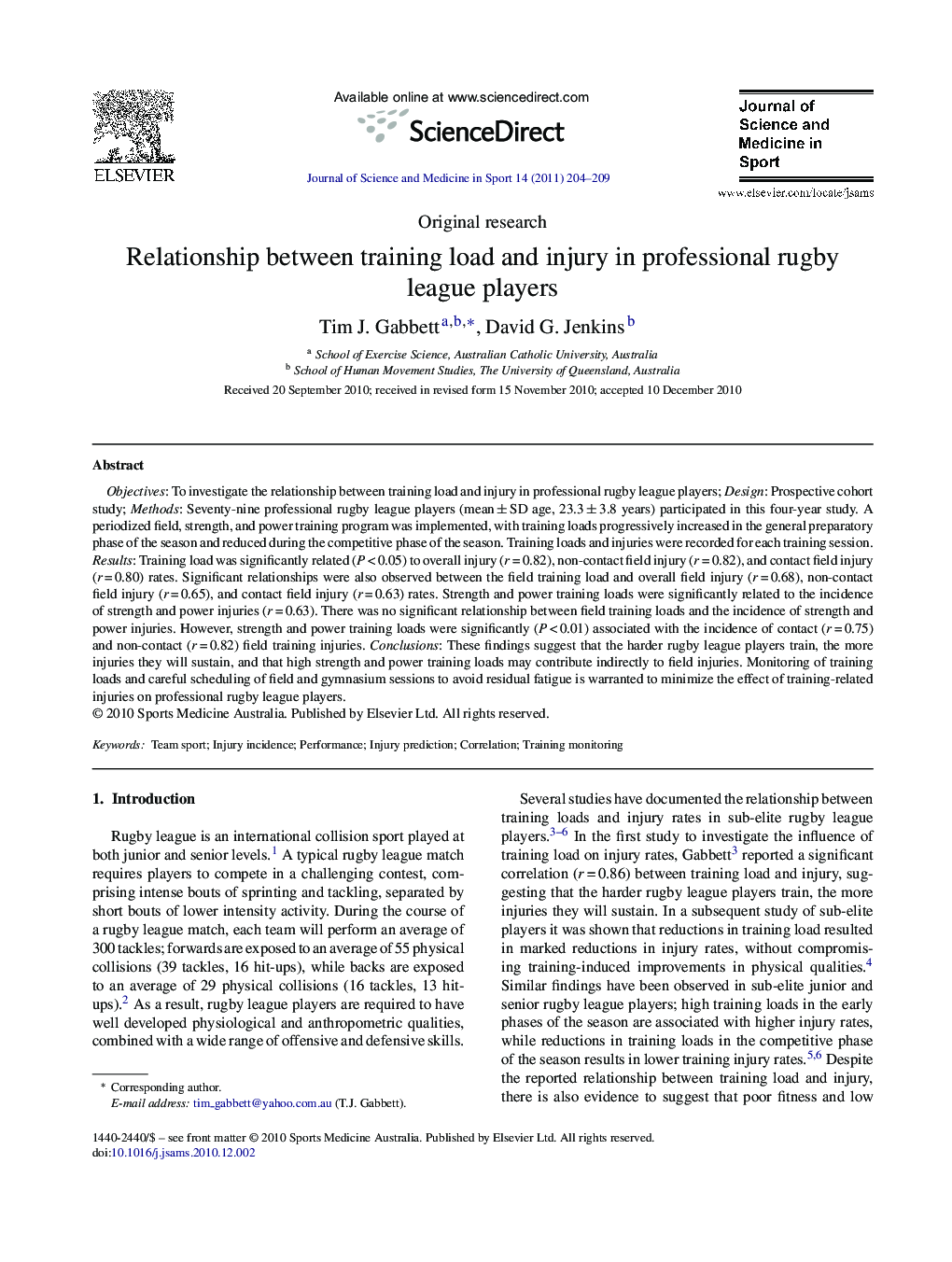| Article ID | Journal | Published Year | Pages | File Type |
|---|---|---|---|---|
| 2703145 | Journal of Science and Medicine in Sport | 2011 | 6 Pages |
Objectives: To investigate the relationship between training load and injury in professional rugby league players; Design: Prospective cohort study; Methods: Seventy-nine professional rugby league players (mean ± SD age, 23.3 ± 3.8 years) participated in this four-year study. A periodized field, strength, and power training program was implemented, with training loads progressively increased in the general preparatory phase of the season and reduced during the competitive phase of the season. Training loads and injuries were recorded for each training session. Results: Training load was significantly related (P < 0.05) to overall injury (r = 0.82), non-contact field injury (r = 0.82), and contact field injury (r = 0.80) rates. Significant relationships were also observed between the field training load and overall field injury (r = 0.68), non-contact field injury (r = 0.65), and contact field injury (r = 0.63) rates. Strength and power training loads were significantly related to the incidence of strength and power injuries (r = 0.63). There was no significant relationship between field training loads and the incidence of strength and power injuries. However, strength and power training loads were significantly (P < 0.01) associated with the incidence of contact (r = 0.75) and non-contact (r = 0.82) field training injuries. Conclusions: These findings suggest that the harder rugby league players train, the more injuries they will sustain, and that high strength and power training loads may contribute indirectly to field injuries. Monitoring of training loads and careful scheduling of field and gymnasium sessions to avoid residual fatigue is warranted to minimize the effect of training-related injuries on professional rugby league players.
